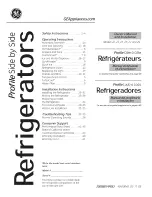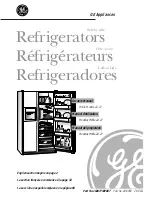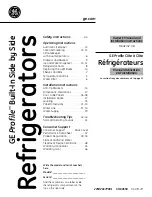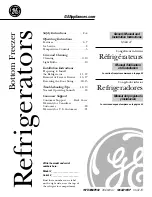
14
Using Your Appliance
Freezing fresh foods
As with storing fresh foods, suitable packaging, correct
temperature and food hygiene will enhance the quality of
the food you are freezing.
Make sure that all foods for freezing are of a high quality,
and suitable for freezing.
Use suitable packaging (plastic bags etc.) to store food in,
and make sure that it is air tight or well sealed. Leaking
packaging will dehydrate the products and lead to loss of
beneficial vitamins.
Mark packages with the type of food contained and the date
of storage.
Food needs to be frozen quickly, so it is best to freeze small
portions whenever possible and ensure that they are as cold
as possible before storage.
Keep food which is fresh away from food which is already
frozen, if you need to freeze fresh food every day, make
sure that it is in small portions to prevent this.
Do not exceed the maximum load for freezing – see data
badge for details (kg/h)
Freezing procedure
This appliance is fitted with a ‘Fast Freeze’ function. Before
you start to freeze foods, make sure that the switch is set to
‘Fast Freeze’ – there is a colour marking which is visible
when you have switched this function on. It is
recommended to leave the ‘Fast Freeze’ on for around 24
hours, prior to freezing any fresh food.
You may also need to adjust the refrigerator thermostat to a
higher setting (between 5 and 7) for around 24 hours before
freezing – especially if you are freezing large amounts of
food (over 1Kg).
Once food has been loaded, leave the ‘Fast Freeze’ on, and
the thermostat on the higher setting for a further 24 hours
before returning the thermostat to its previous setting.
If you are freezing food which is less than 1Kg, you may not
need to adjust the thermostat temperature.










































